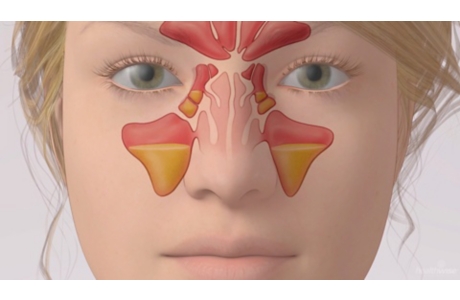Endoscopic Sinus Exam
Overview
An endoscopic sinus exam allows the doctor to see all the structures inside the nose and the sinuses.
Before inserting the endoscope, the passages inside the nose are opened up with a decongestant medicine and numbed with an anesthetic. The endoscope is guided up through a nostril and into the sinus opening, but it is not able to be inserted into the sinus itself.
The test is usually done by an ear, nose, and throat (ENT) specialist (also called an otolaryngologist or otorhinolaryngologist). It can be done in the doctor's office and takes 5 to 10 minutes.
Why It Is Done
An endoscopic sinus exam may be used if:
- The diagnosis of sinusitis is still in doubt after a CT or MRI scan is performed.
- Initial medical treatment of sinusitis has failed to solve the problem.
- Surgery is being considered. An endoscopic sinus exam may be used to evaluate the structures inside the nose where the surgery will be performed.
Results
Normal
Bones and soft tissues appear normal.
Abnormal
- Swelling and redness (inflammation) of the mucous membrane are present.
- The nasal passages are blocked or have an abnormal size or shape.
- Discolored, thick mucus is draining from a sinus opening.
- Growths (nasal polyps) or foreign bodies inside the nose are seen.
- The partition between the nasal cavities is crooked (deviated nasal septum) and is causing obstruction.
Credits
Current as of: October 27, 2024
Author: Ignite Healthwise, LLC Staff
Clinical Review Board
All Ignite Healthwise, LLC education is reviewed by a team that includes physicians, nurses, advanced practitioners, registered dieticians, and other healthcare professionals.
Current as of: October 27, 2024
Author: Ignite Healthwise, LLC Staff
Clinical Review Board
All Ignite Healthwise, LLC education is reviewed by a team that includes physicians, nurses, advanced practitioners, registered dieticians, and other healthcare professionals.



